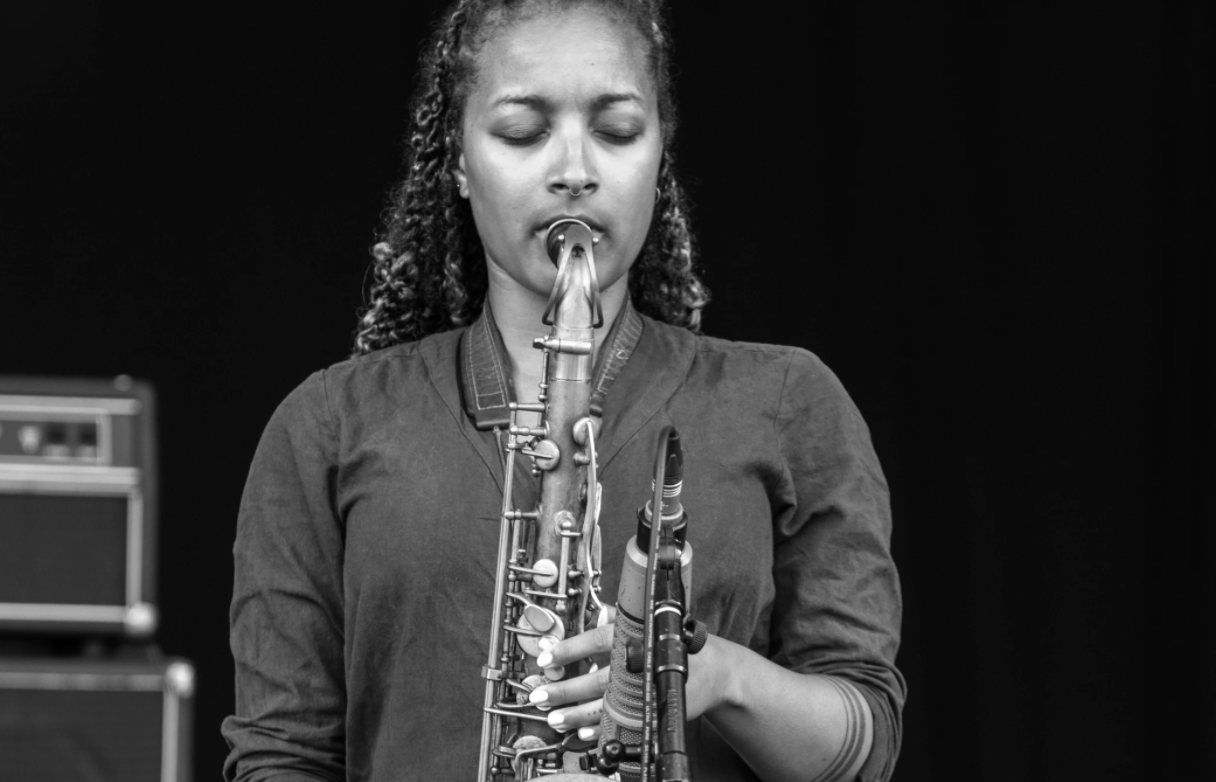Women in jazz still face many barriers to success

Photo by Slim Emcee on Unsplash
It’s a cliché that music is a meritocracy, in which success is seen to arise from a combination of talent and effort. It is likely, though, that some female musicians find the professional environment hostile. In recent years, we’ve seen extensive reporting about sexist assumptions in the jazz industry, as well as accounts of sexual harassment. Clearly, changes are going to be needed both audience and industry side, as explored here by Paul Widdop and Siobhan McAndrew.
There are are relatively few female musicians in jazz. Recordings led by women formed only one-fifth of the top 50 albums NPR Music Jazz Critics Poll over 2017 to 2019, and this seems to be a long-term trend: a survey of British jazz musicians in 2004 suggested 14% were female.
Rather than there being explicit barriers to entry, scholarly attention has focused on gender differences in preferences and socialisation: men seeing concerts as a male space, and male musicians more likely to be encouraged to continue following early experience of playing with others – particularly in terms of learning improvisation and taking a solo from a young age.
It’s a cliché that music is a meritocracy, in which success is seen to arise from a combination of talent and effort. If women are not present in jazz, it is often assumed to be because they cannot play well enough, play the wrong instruments, or simply prefer other musical genres and the cultures around them.
It is likely, though, that some female musicians find the professional environment hostile. In recent years, we’ve seen extensive reporting about sexist assumptions in the jazz industry, as well as accounts of sexual harassment. Clearly, changes are still needed on the industry side. But what about the audiences? Are they helping to shape the sexism that is being reported in jazz?
Interrogating the numbers
Our new research paper combines analysis of John Chilton’s Who’s Who of British Jazz, an archive of career histories from 2004, with data on the recordings made by each of these musicians drawn from the continually updated Lord Discography. We also examine jazz audiences via the government’s 2016 Taking Part survey of cultural participation.
Chilton gives a rich picture of the history of British jazz careers — there is no better single source giving such detail on career histories for a large number of jazz musicians. Careers are generally lifelong, and so we would not expect dramatic shifts to have taken place among the community of professional musicians since his book was published. Taking Part gives more contemporary information on the jazz audience.
Among audiences, the government survey data showed that more men than women report attending jazz concerts, and that the gap is larger for jazz than for rock. By comparison, women are more likely to attend classical concerts than men. Female jazz performers therefore face primarily male audiences, and rely on them to buy recordings too.
For musicians, our analysis suggests that men tended to play with men, and women – represented in yellow in the network diagram below – also tend to play with men. Although there have been celebrated female-led initiatives and female-only bands, women are still dependent on men for their careers. Our longer-run perspective also supports findings from analysis of female representation in jazz festivals published in December 2020.
Part of this lack of women reflects the history of the genre. The world of pre-second world war jazz was overwhelmingly male. It was a time when it was near-taboo for women to play professionally in nightclubs and dance halls, at least outside female-only bands. In earlier decades, many jazz musicians honed their trade in the armed forces. The expansion of jazz tuition by universities made a difference: jazz programmes run by universities were more open to women than informal or military training routes, providing access to networks and credentials.
Instrument choice and audience preferences
There is also some evidence that women are pigeonholed as vocalists: 60% of the female musicians in our dataset are vocalists compared with 2% of male musicians. Moreover, the female musicians in our dataset play slightly fewer instruments on average than the male musicians. Our analysis finds that this lower versatility is in turn associated with making fewer records. Learning fewer instruments in the first place may therefore be one of the reasons for the recording gender gap.
On the recordings side, we see a clear and consistent gap between male and female musicians in the numbers of records made, even when taking training, instrument choice and period of birth into account. This suggests that women face structural constraints in getting recorded, whether due to having shorter careers, or a tendency for male musicians to be selected in preference.
Our triple focus on audiences, collaborations and recordings gives us a new perspective on gender inequalities – one which encourages us to think afresh about how things could be different. Jazz audiences tend to be older and predominantly male. Ultimately, they fund the festivals and recordings which provide opportunities to female artists: their musical preferences and preferred concert experiences matter, and festival programmers have to take them into account.
Assumptions about what the audience wants tend to reproduce the male-dominated world of jazz. Audiences can play a part in challenging these assumptions. They can do this by being open to different live music experiences, and most importantly, by supporting and investing in talented female jazz musicians.![]()
Paul Widdop, senior lecturer in Sport Business, Leeds Beckett University and Siobhan McAndrew, senior lecturer, Quantitative Social Science, University of Bristol. This article is republished from The Conversation under a Creative Commons license. Read the original article.


































